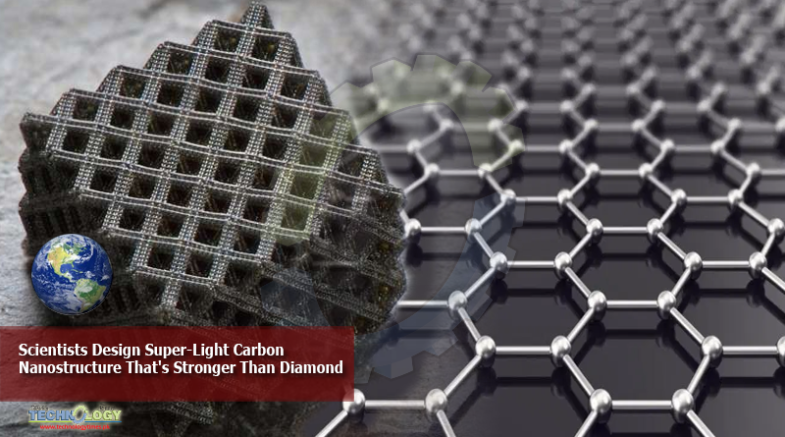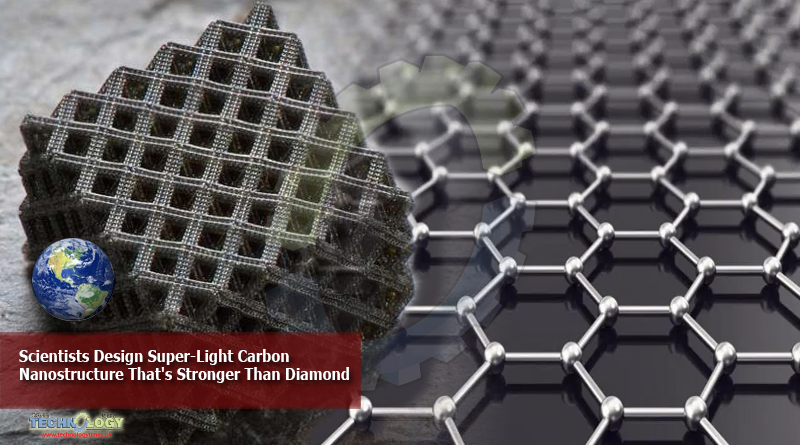Scientists have found a new way to structure carbon at the nanoscale, making a material that’s superior to diamond on the strength-to-density ratio.While the tiny carbon lattice has been fabricated and tested in the lab, it’s a very long way off practical use.

But this new approach could help us build stronger and lighter materials in the future – which is something that’s of great interest to industries such as aerospace and aviation.
What we’re talking about here is something known as a nanolattices – porous structures like the one in the image above that’s made up of three-dimensional carbon struts and braces. Due to their unique structure, they’re incredibly strong and lightweight.
Usually these nanolattices are based around a cylindrical framework (they’re called beam-nanolattices). But the team has now created plate-nanolattices, structures based around tiny plates.
This subtle shift may not sound like much, but the researchers say it can make a big difference when it comes to strength.
Based on early experiments and calculations, the plate approach promises a 639 percent increase in strength and a 522 percent increase in rigidity over the beam nanolattice approach.
“Scientists have predicted that nanolattices arranged in a plate-based design would be incredibly strong,” says materials scientist Cameron Crook, from the University of California, Irvine (UCI).
“But the difficulty in manufacturing structures this way meant that the theory was never proven, until we succeeded in doing it.”
To finally test these materials in the lab, the researchers used a complex 3D laser printing process called two-photon polymerisation direct laser writing, which essentially uses carefully managed chemical reactions inside a laser beam to etch out shapes at the smallest of scales.
Using liquid resin sensitive to ultraviolet light, the process shoots photons at the resin to turn it into a solid polymer in a particular shape. Additional steps are then required to remove excess resin and to heat up the structure to fix it in place.
What the scientists have managed to do here actually comes close to the maximum theoretical stiffness and strength of a material of this type – limits known as the Hashin-Shtrikman and Suquet upper bounds.
As confirmed by a scanning electron microscope, these are the first actual experiments to show that those theoretical limits can be reached, though we’re still a long way off being able to manufacture this material at a larger scale.
In fact, part of the material’s strength lies in its tiny size: as objects like this get shrunk below 100 nanometres – a thousand times smaller than the thickness of a human hair – the pores and cracks in them get ever smaller, reducing potential flaws.
As for how these nanolattices might eventually be used, they’ll certainly be of interest to aerospace engineers – their combination of strength and low density makes them ideal for aircraft and spacecraft.
“Previous beam-based designs, while of great interest, had not been so efficient in terms of mechanical properties,” says mechanical engineer Jens Bauer, from UCI.
“This new class of plate-nanolattices that we’ve created is dramatically stronger and stiffer than the best beam-nanolattices.”
Originally Publish at: https://www.sciencealert.com/
